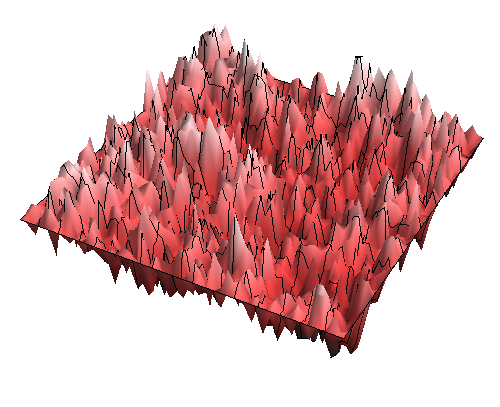Quantum field theory takes an infinite number of field configurations and add them up with the proper weighting to come to a single conclusion. The Standard Model is one well-known example, but this could be much, much more useful. For example, we could predict readings on compasses – something we can’t do right now – at different altitudes as climbers go up mountains. It might sound simple, but gravity, and all the infinite number of fields generated by planet earth, are actually incredibly complicated.
 |
| Gaussian free field model by Samuelswatson via Wikipedia. |

